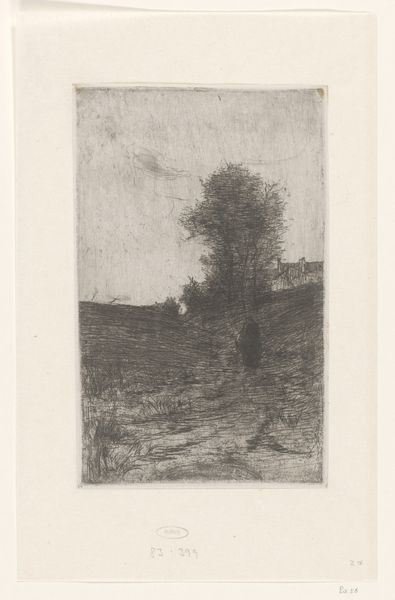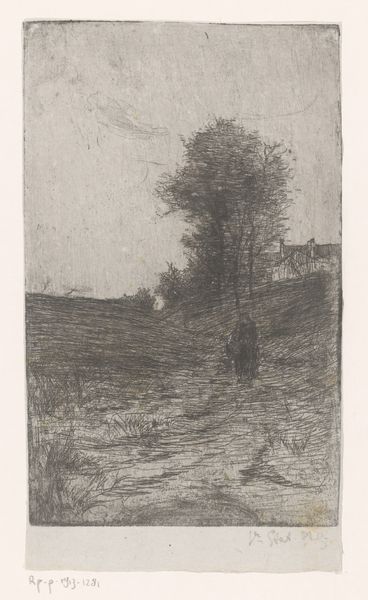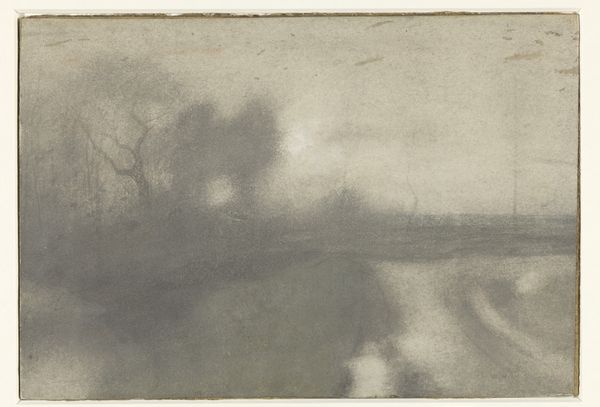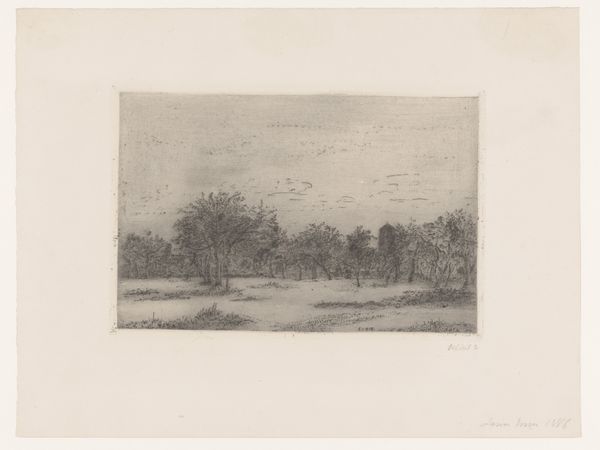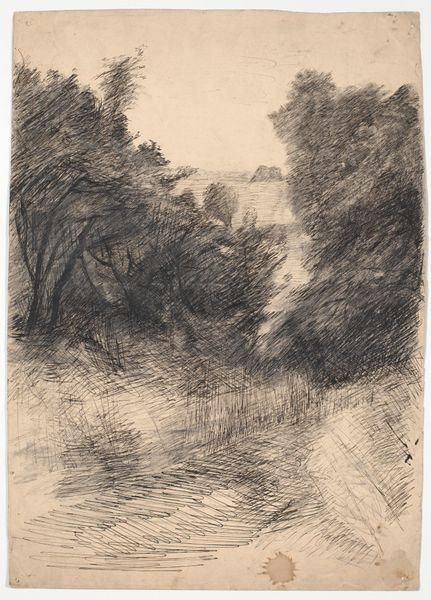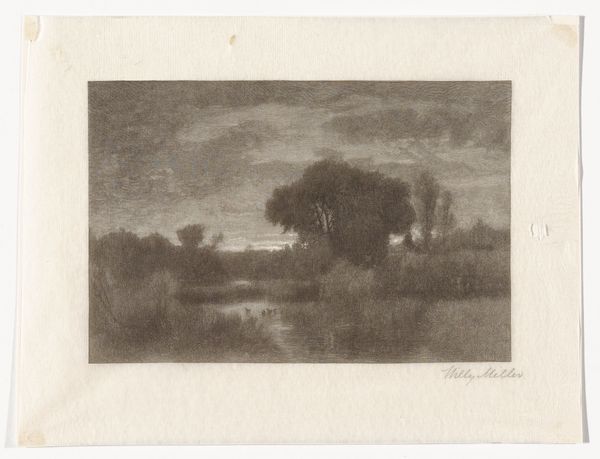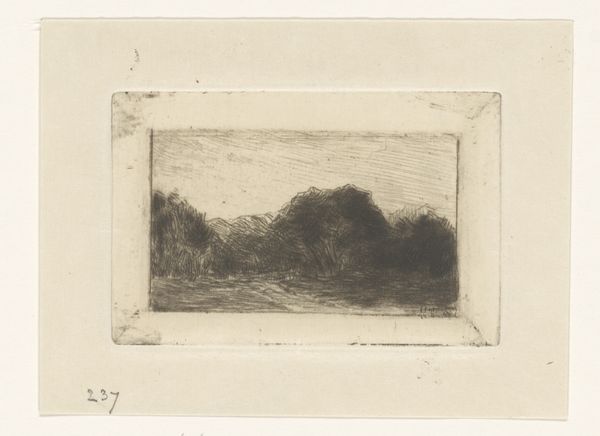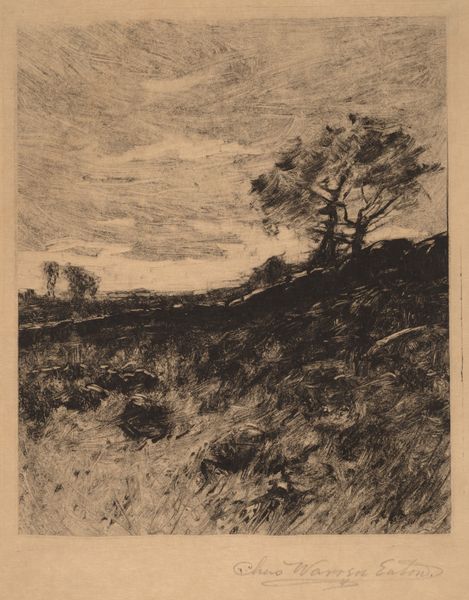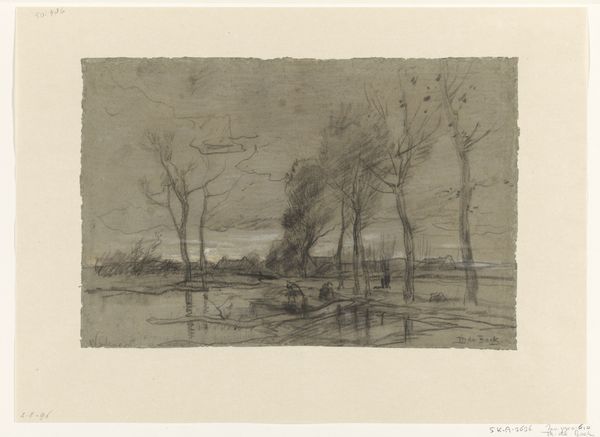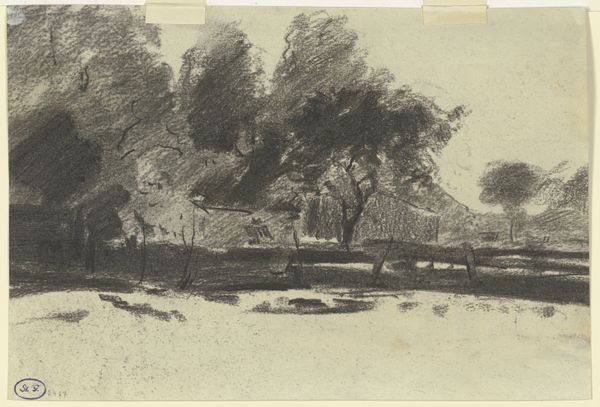
drawing, pencil
#
drawing
#
impressionism
#
landscape
#
pencil
#
realism
#
monochrome
Dimensions: height 220 mm, width 293 mm
Copyright: Rijks Museum: Open Domain
Editor: Here we have Pieter de Josselin de Jong's "Landweg met hooiwagen," created sometime between 1871 and 1906. It's a pencil drawing, currently held at the Rijksmuseum. I find the limited monochrome palette quite evocative; it has a very dreamlike, perhaps even melancholic, quality. What symbols or narratives jump out to you when you look at this? Curator: The enduring appeal of the monochrome is powerful. It directs our focus not just on form, but also on the relationship between light and shadow, on absence and presence. Notice the hay wagon - what does it represent to you? Editor: Perhaps the cycle of agricultural life? Harvesting, labor... the passing of time. Curator: Precisely. And what does it tell us about our connection to nature and its cycles? It appears frequently as a symbol for labor, providence, or hardship. Beyond that, in a European context, monochrome drawings during that time reference photography as a new technology but also traditional printmaking - there's this interplay between modernity and tradition that I find really fascinating. It shows how artists digested industrial innovation with ancient modes of producing images. Are you catching what I'm laying down? Editor: Absolutely. It’s a compelling intersection. The artwork exists both as a unique artistic statement, but also exists in conversation with all visual imagery being created during the turn of the century. Curator: Consider that further in your research, how art images acquire resonance over time and become the memory palaces we return to. Editor: I definitely will! Thanks for giving me so much to think about.
Comments
No comments
Be the first to comment and join the conversation on the ultimate creative platform.


